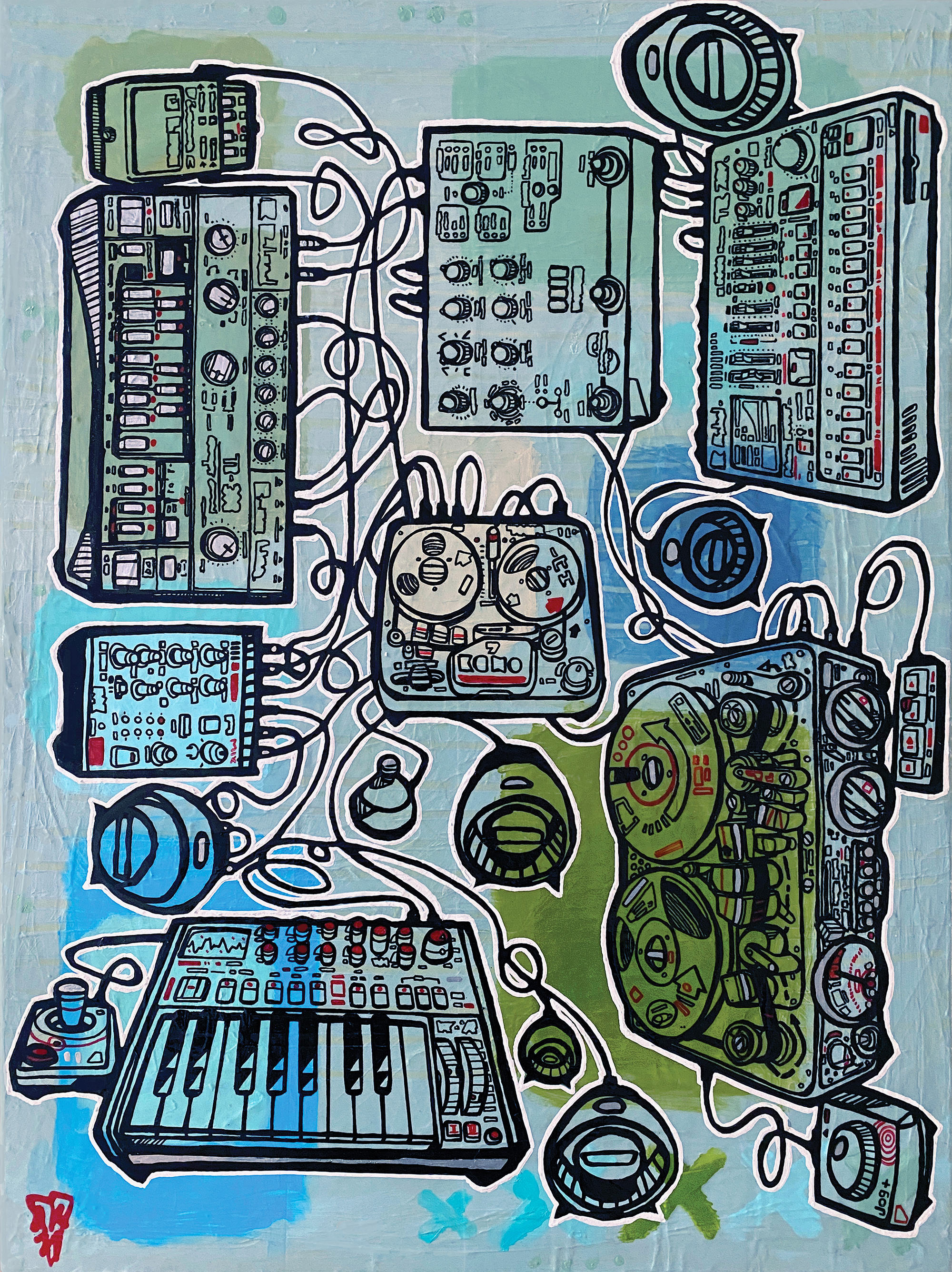
Recently, I was helping out a client via one of my Virtual Recording Workshops. In his single song session, there were almost 100 guitar tracks, with multiple amps and mics for every part and overdub. He was trying to learn more about his gear, what would work, and how to best apply every technique and approach. I made suggestions about finding specific sounds for different guitar parts in order to complement each other, as well as combining blends of mics in the analog realm while tracking (a favorite trick of mine). We had a good talk about his working methods, and I think, in the end, my feedback was able to help him out. As we kept discussing the recording process, he referred back to the multitude of guitar tracks and asked, “But wouldn’t you do this sort of tracking if you had unlimited time?” My response was, “No. Never.”
Days later, I was still mulling over his question, and, specifically, my answer. Sure, I have “experimented” at with “over-mic’ing” and using multiple guitar amps, but always with a certain goal in mind. I’ve also produced sessions with 150 tracks; sometimes you just have to! Over time I’ve learned what works best in most scenarios, and have built up some techniques that I use most of the time. When I’ve dealt with mixing sessions that had a crazy number of tracks for amps, takes, mics, or even different guitars (through these same combos of amps and mics) to choose from, I end up quickly muting as many as I can. I need to find out what will work together, and sure, maybe I’ll swap out one of my choices after a bit of mixing for a tonality that fits better. But this process keeps phase issues to a minimum, gets me into the mixing process quickly, and keeps me moving forward on the mix.
However, the question, “Wouldn’t you do this sort of tracking if you had unlimited time?” kept popping up in my head. No, of course I wouldn’t. Why? Because I’d spend that extra time finding the best sounds I could during tracking, distilling parts down to the actual sounds needed – not an assortment of “possible” sounds – and reducing the track count in order to make the later mixing process manageable and easy. It’s not the possibilities I need when it comes time to mix, it’s the decisions that have already been made that will give me the time to do as good of a mix as possible. This is what opens up time to be creative and solve other issues, instead of leaving all these open-ended sounds to make sense of later.
You know all those classic song multitrack sessions that pop up online? Have you noticed how much is already completely done on these sessions? Push up the faders, pan a few tracks, maybe add some reverb or echo to the voices, and you might be 95% finished with a mix. Yes, we can say, “They had to work this way because of limited tracks.” But that’s not the real takeaway to be had; not for me. The engineers and producers on these sessions were making sure they left something usable and ready to go on these tapes, not 100 guitar possibilities that had to be sorted through, debated over, and auditioned in order to make a song’s mix work.
Don’t get me wrong. There should be time set aside for studio experimentation, and there should be time spent recording music. Sometimes they are the same time, and in other cases they are better off to be done at different times. Recording 100 tracks of electric guitars is okay, as long as you find yourself learning from the experience. Make sure you’re clear about your goals, as well as the end result you desire, and you’ll have even more time to actually perfect your art. 

